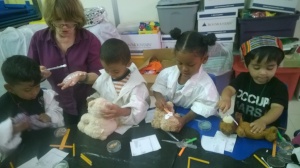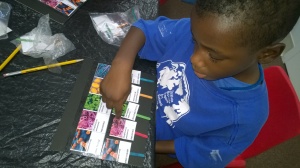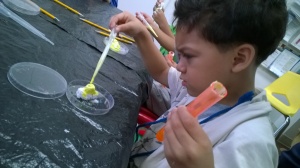Month: September 2015
Theatrical Journeys: Introducing STEM to Young Children
A fun, creative approach to growing scientific thinking for all students

As educators, we’ve found ourselves spending most of our time and resources finding ways to better convey the STEM subjects to students that live an increasingly technology dependent world. The problem with this way of thinking is that it, without really even trying, devalues the arts and humanities as non-essential. Although no one is going to cure cancer by reading Shakespeare and we aren’t going to solve world hunger by painting pictures, we lose something by leaving these essential subjects by the wayside. The humanities help us understand what it means to be human and art is almost always fun. It’s easy to engage students, especially young ones, when you can incorporate dramatic play into your own lessons. So why not teach STEM lessons through the lens of theatre?
Triggering the joy of discovery in STEM
This is exactly the kind of creative idea that Elizabeth Bruce at CentroNia in Washington, DC is doing with her Theatrical Journeys Project. Drawing on over 35 years of experience in the arts, Ms. Bruce has developed this project as a homegrown, community based initiative, with funding from the DC Arts Council and similar organizations contributing (including the McCarthey Dressman Education Foundation). According to her proposal “The Theatrical Journeys Project is innovative because it fuses child-centered, dramatic play with simple STEM phenomenon. The STEM phenomenon is explored thoughtfully through experiential lessons. STEM content is made concrete through simple simulations and multi-sensory explorations rooted in play and the joy of discovery.” Elizabeth Bruce has also ensured that visual aids are bilingual, reflecting the needs of the students in her school and making sure that all students are able to participate.
How a science lesson becomes a theatrical journey

Bruce’s lessons are simple, real world situations that kids may find themselves in some day. For example, in the sick teddy bear journey, the children (”doctors”) will diagnose their teddy bear (”patient”), checking it’s pulse, or taking a mouth swab. They then will “culture” the bacteria in an incubation oven. The next step of the lesson is figuring out which bacteria has grown and how best to cure it using antibiotics. It may seem silly at first to imagine a group of young kids diagnosing a teddy bear. But when you look closer, you can see those gears in their minds starting to shift. Connections are being made between this lesson and the real world. By taking scientific inquiry and couching it in make believe, educators are making learning more digestible, turning a lesson into into a playful treat.

The work of Theatrical Journeys is to produce simple lesson plans. Twenty was the original goal, though that may be exceeded as of this update. Documentation and video of the project will also be uploaded to YouTube for other educators to consider. Like the art it imitates, Theatrical Journeys is constantly evolving project, driven by the needs of the students in every way.
Increasing respect between peers, opening minds to STEM careers and capturing disengaged learners

As mentioned before, the project has already produced a number of new and exciting journeys, so how are the students responding? According to the progress report “the tactile and kinesthetic child-centered nature of the journeys has become a model of how to effectively engage young children who often present behavioral or disengaged learning challenged in the PreK classroom. Happily, these children consistently engage fully with the hands-on, “there-are-no-wrong-answers” approach to the Theatrical Journey Project.” Not only that, there has been the unexpected, but wholly welcome side effect of increasing respect between students. By exposing students, especially minority ones, to moments where they are refered to by their peers as “Doctor” has fostered an aspirational attitude that wasn’t there previously in many of the students. And this is a good thing.

I said earlier that no one is going to cure cancer by reading Shakespeare, but if by playing doctor with this teddy bear in PreK even one student is inspired to grow up to become one… they might just.
Further reading
- Growing from STEM to STEAM, ArtsEdge (2014)
- STEM vs. STEAM: Do the Arts belong?, EducationWeek (2014)
- STEM to STEAM: Resource Roundup, Edutopia (2014)

